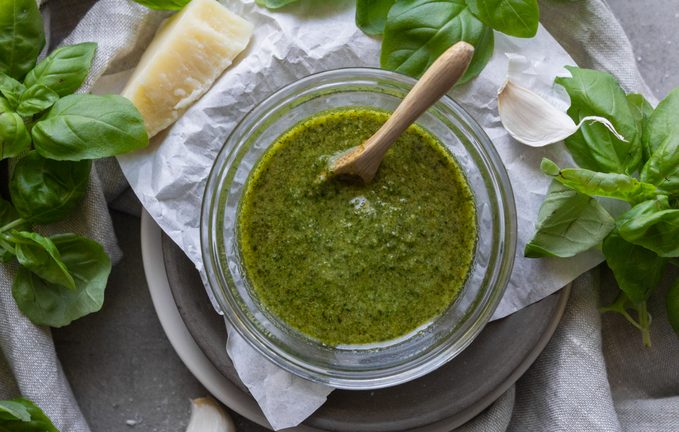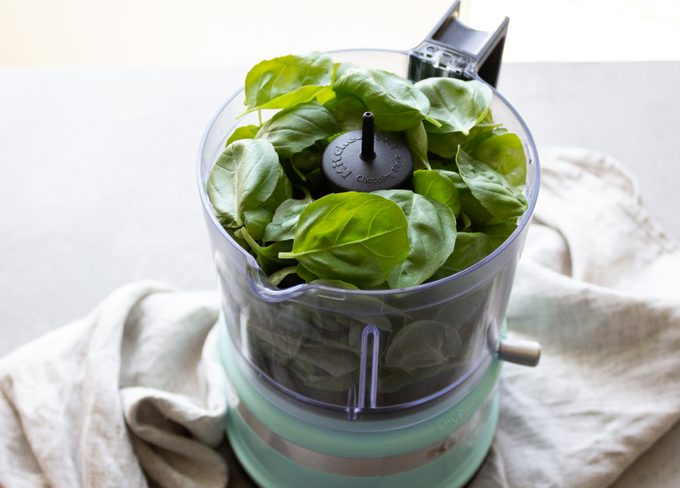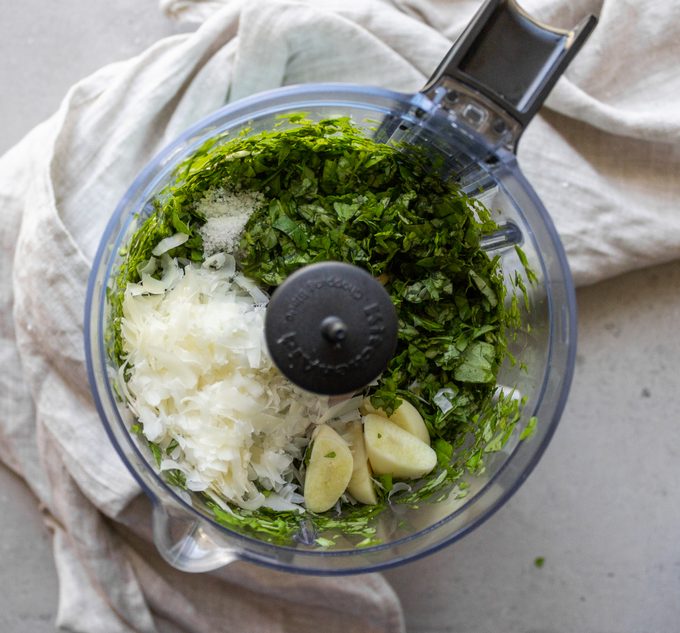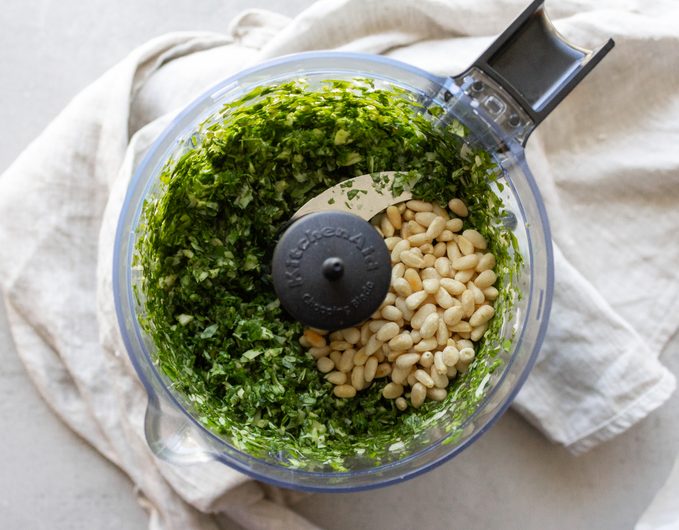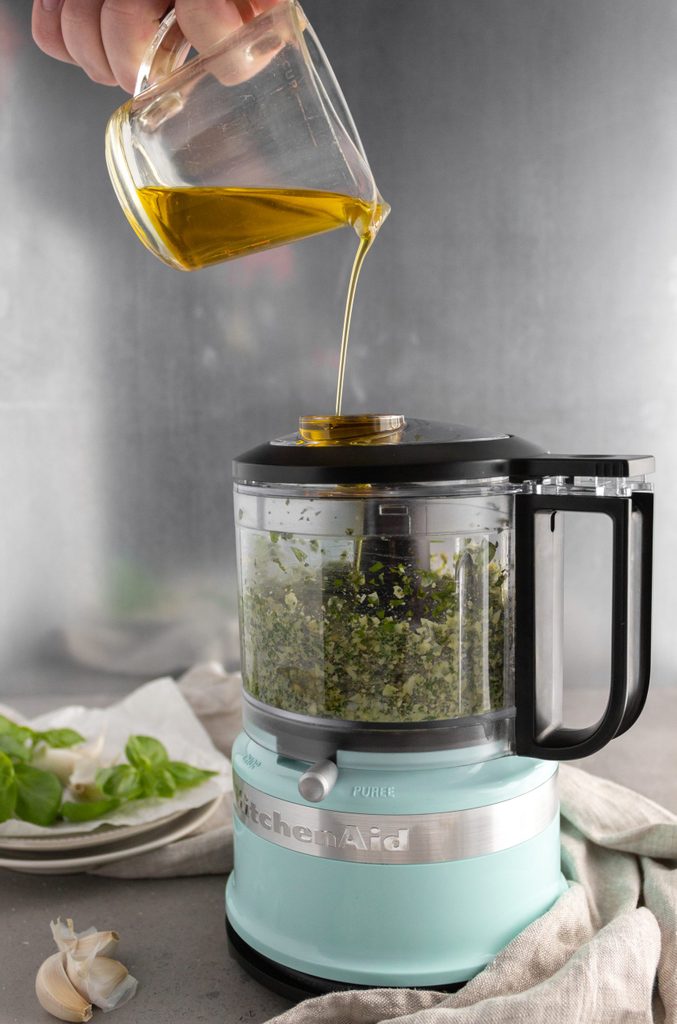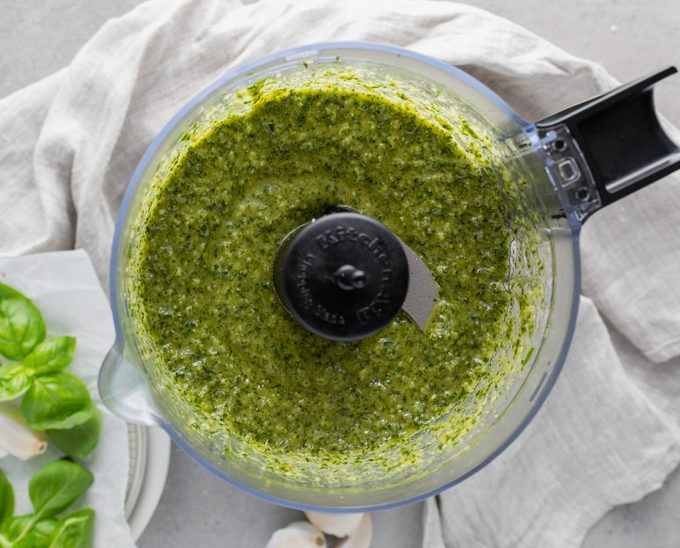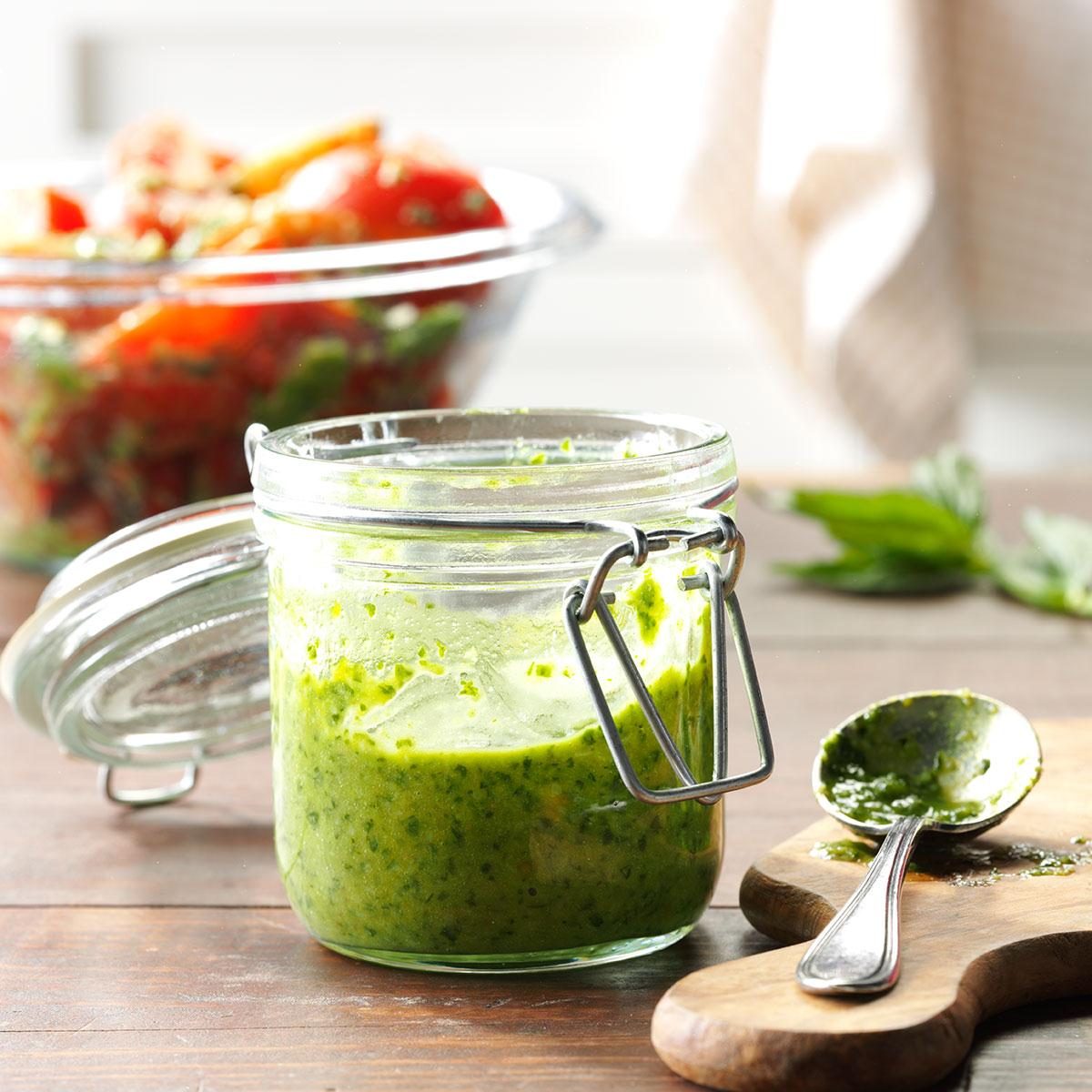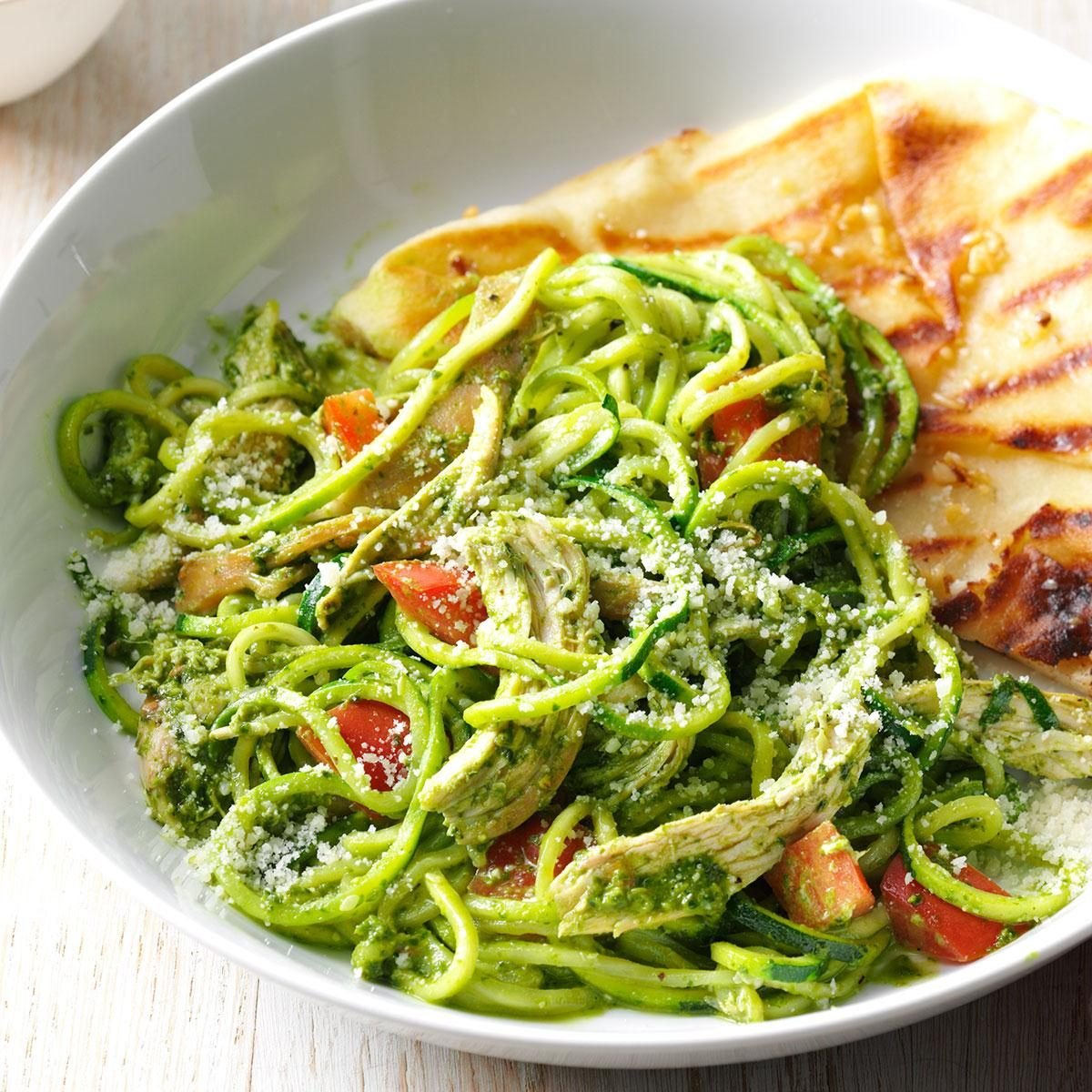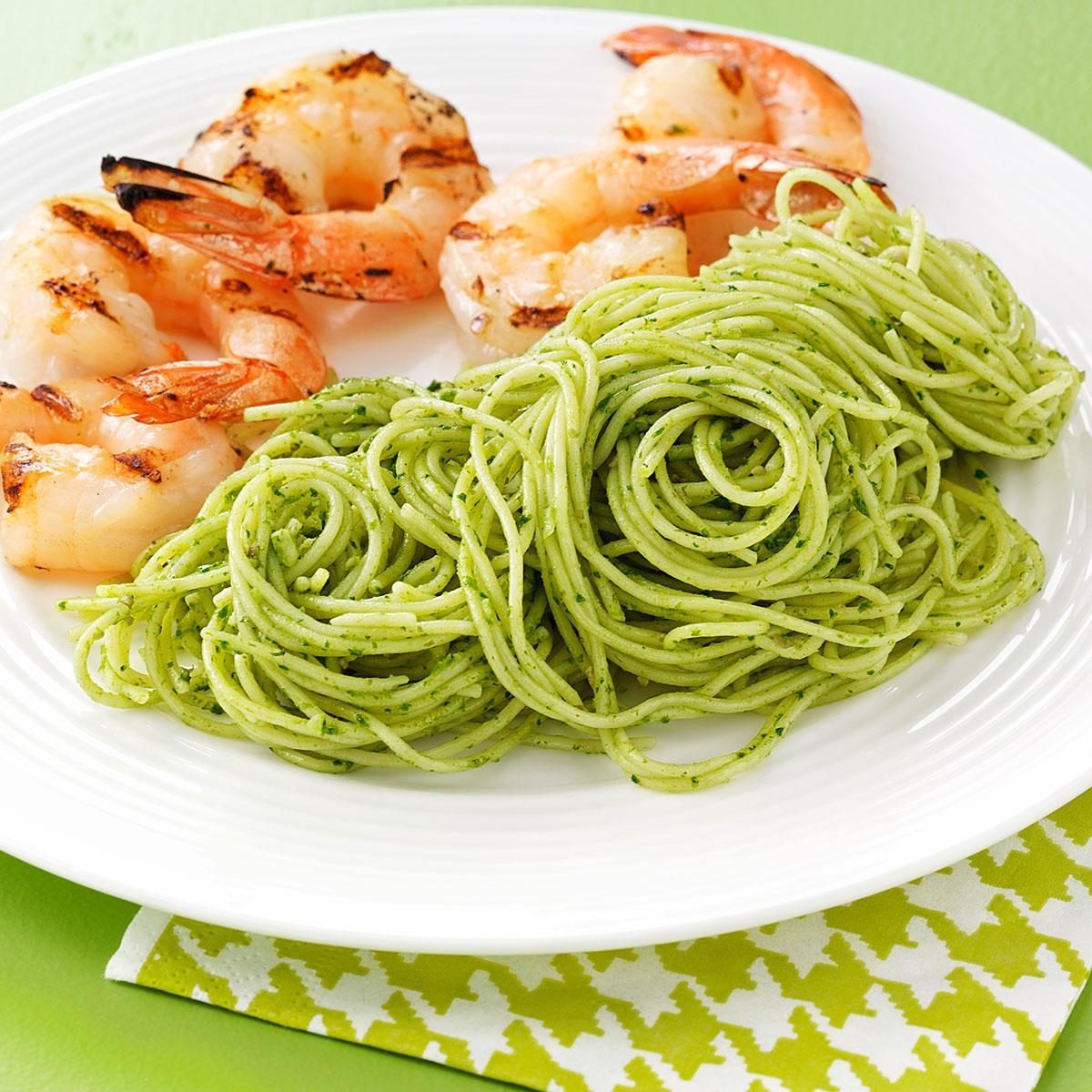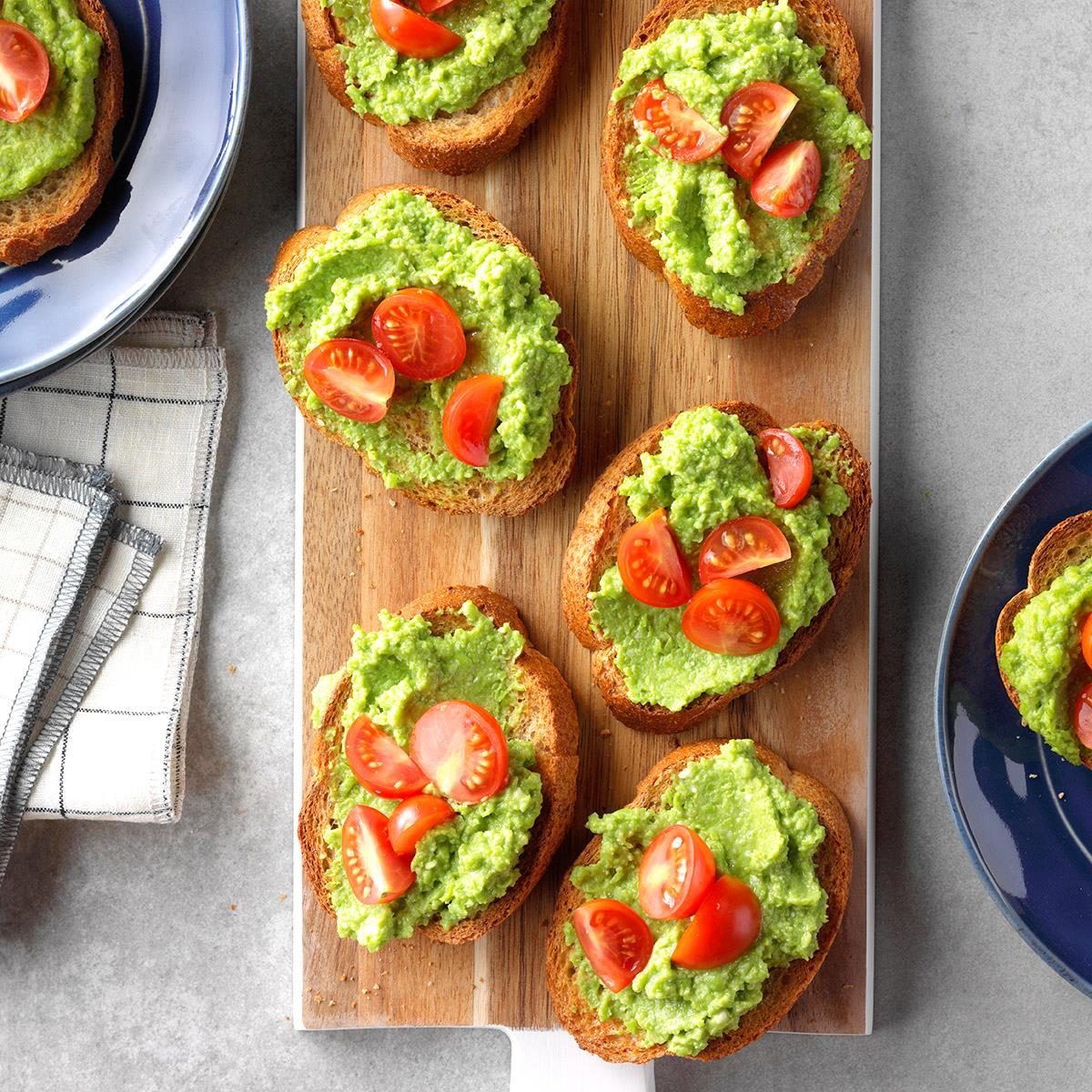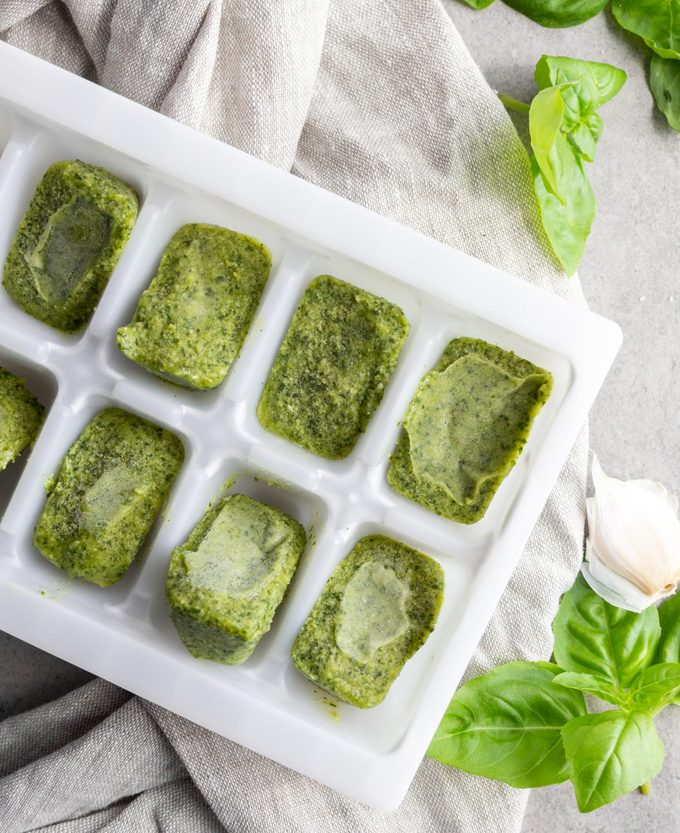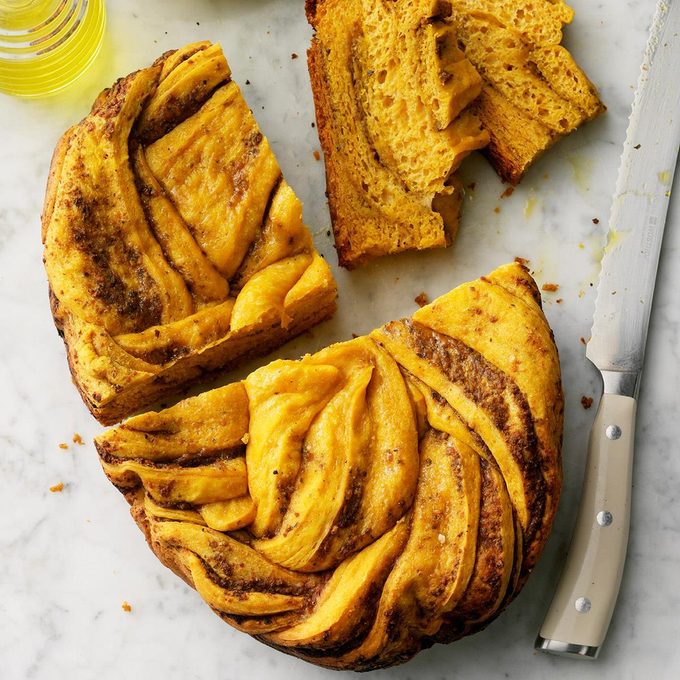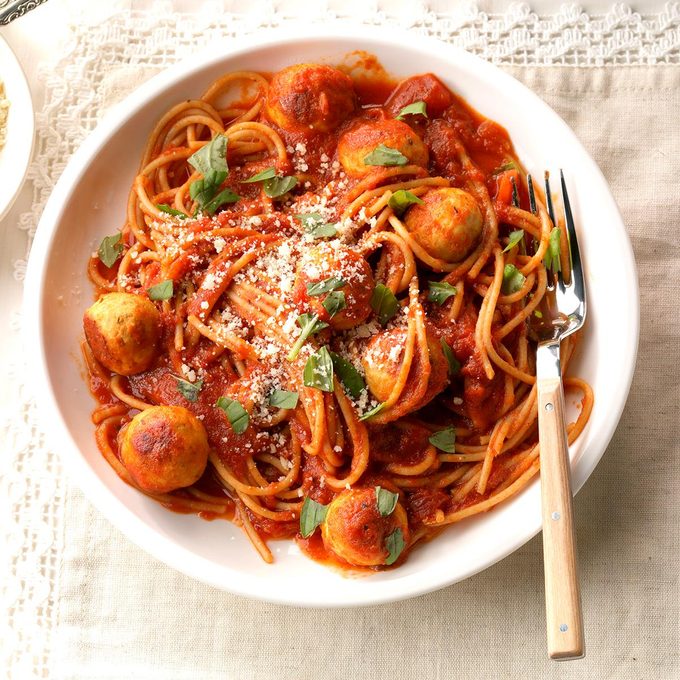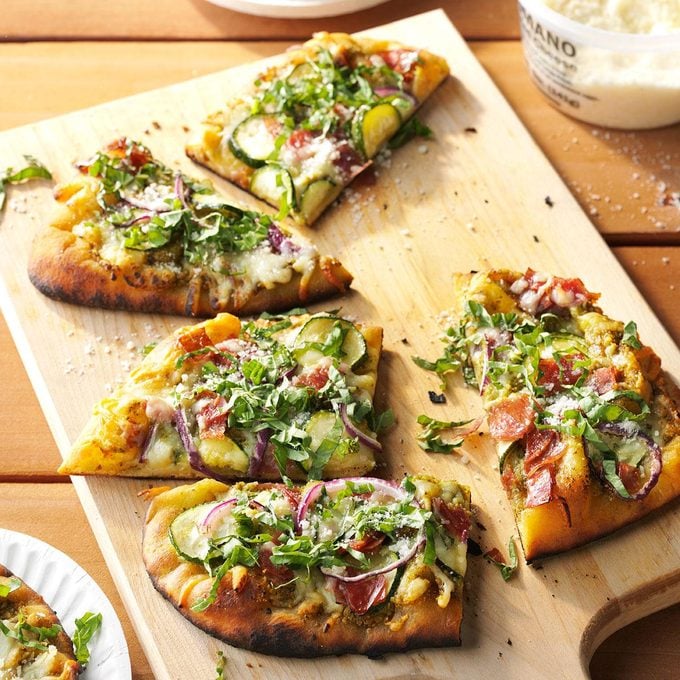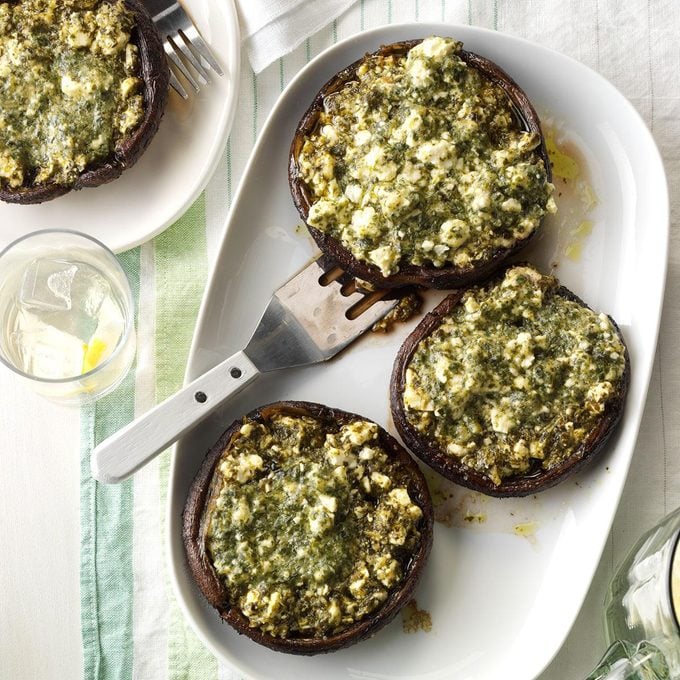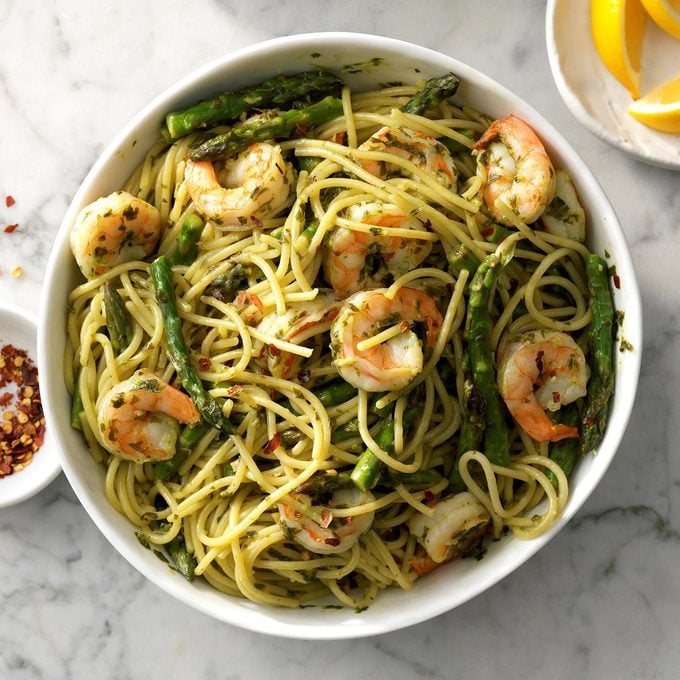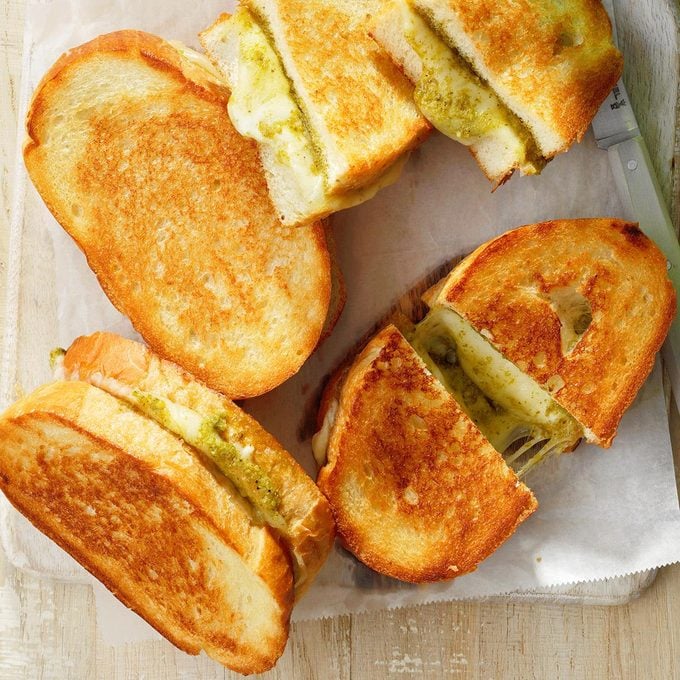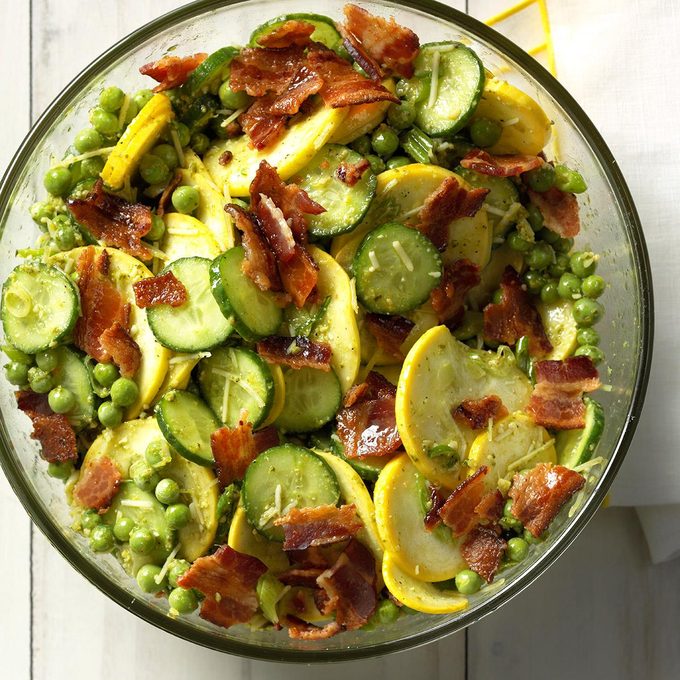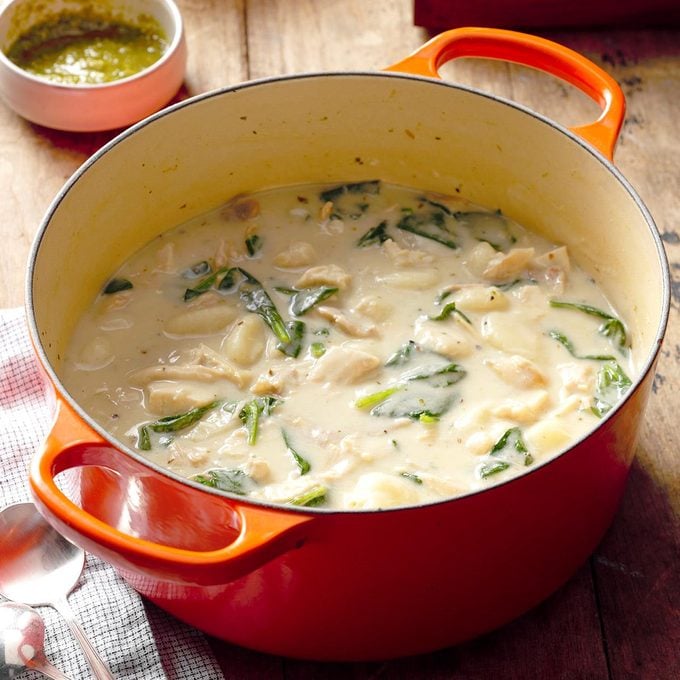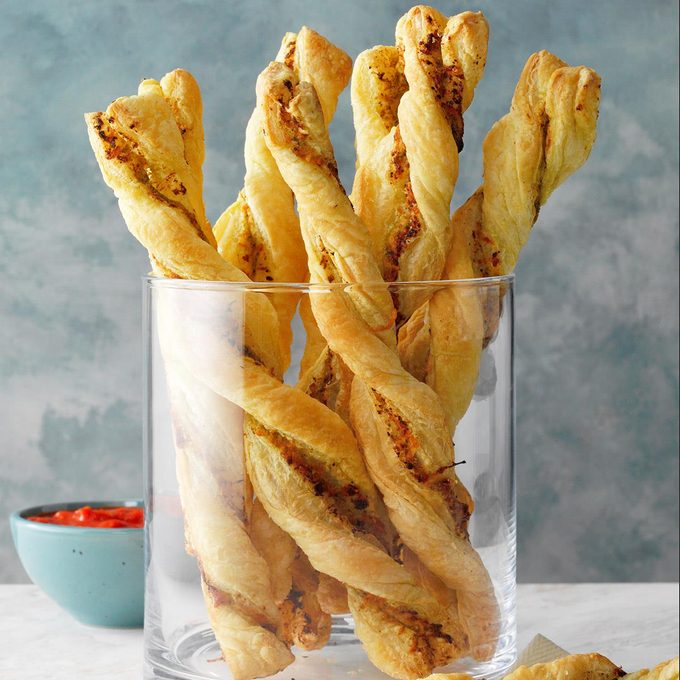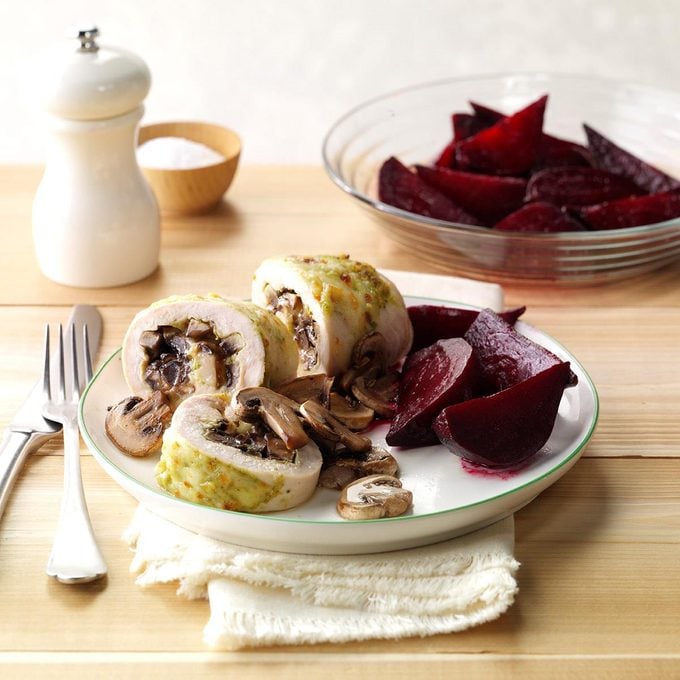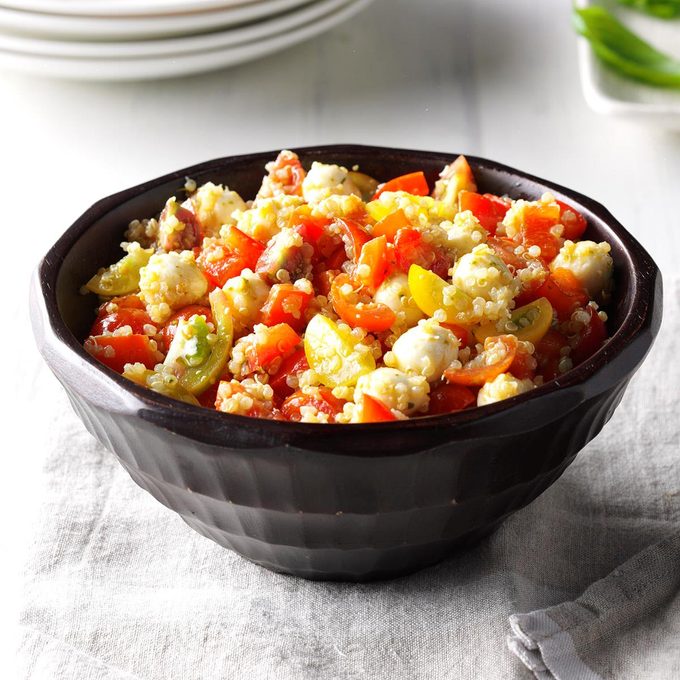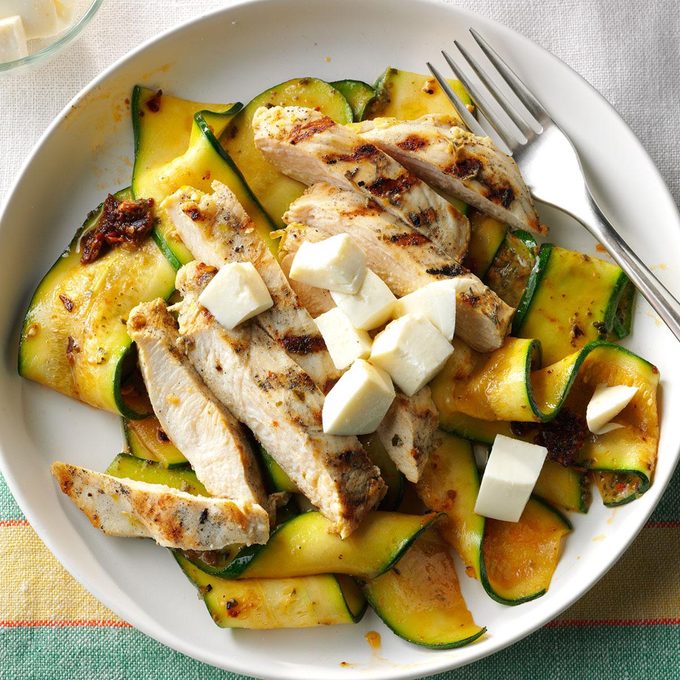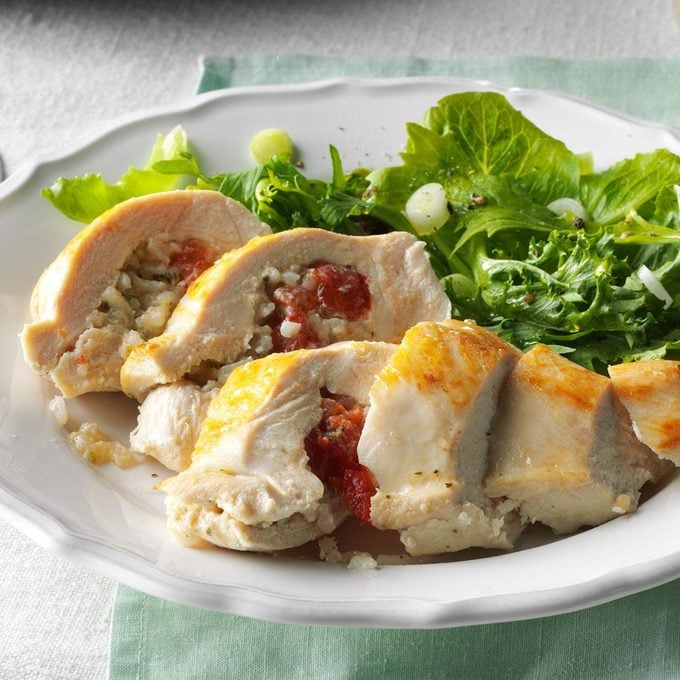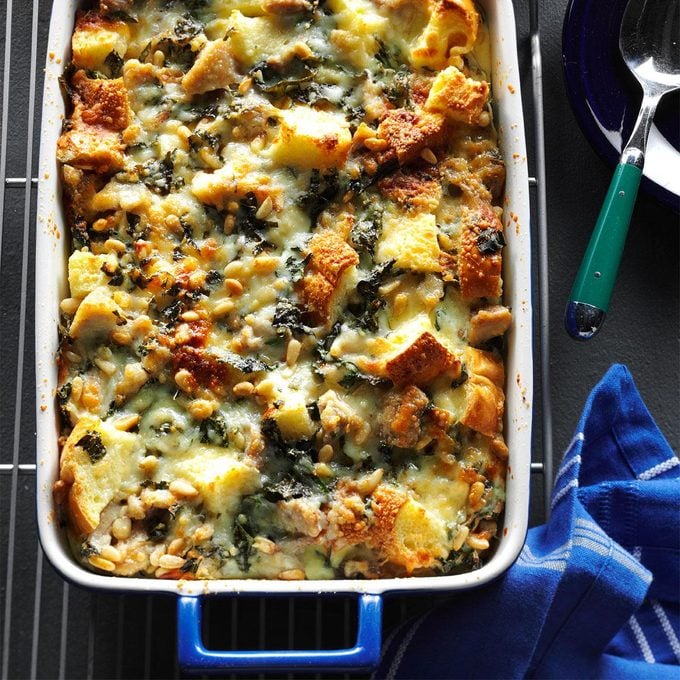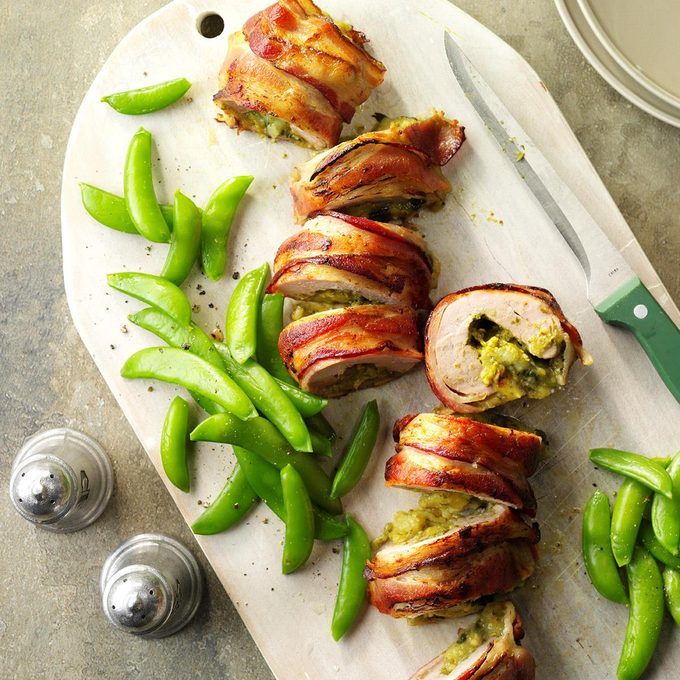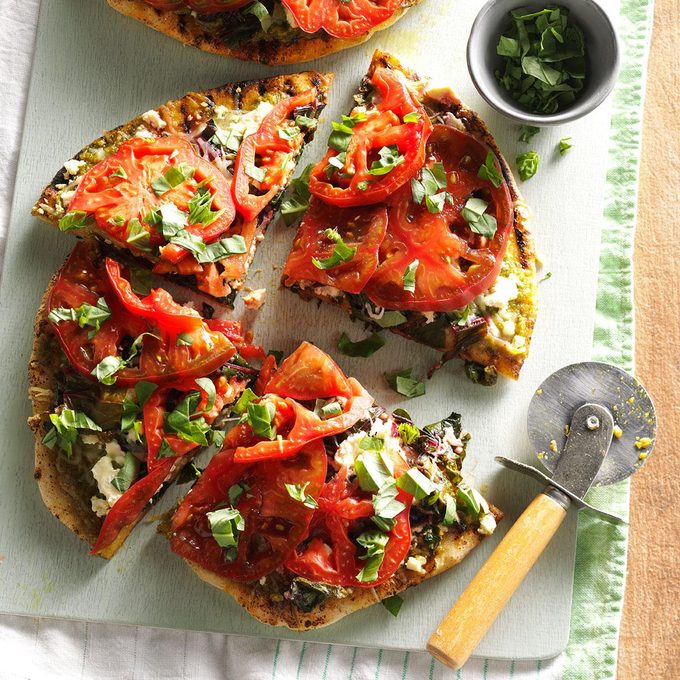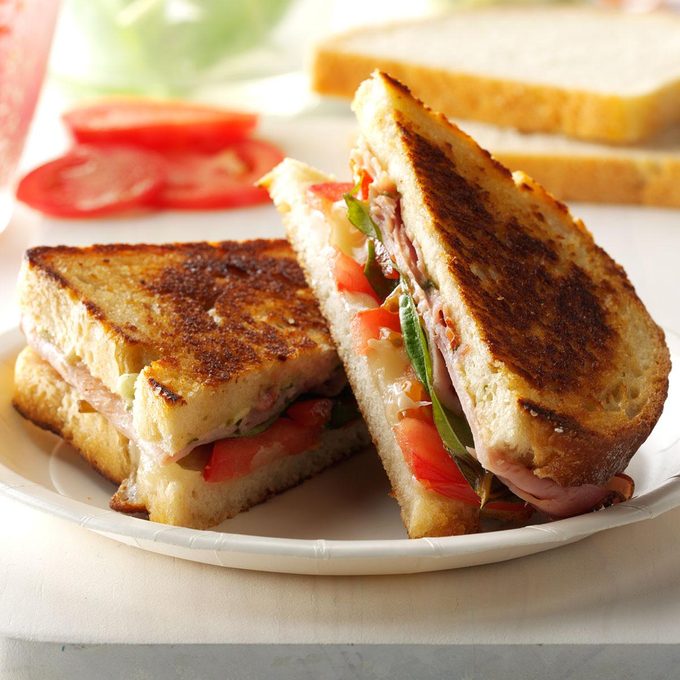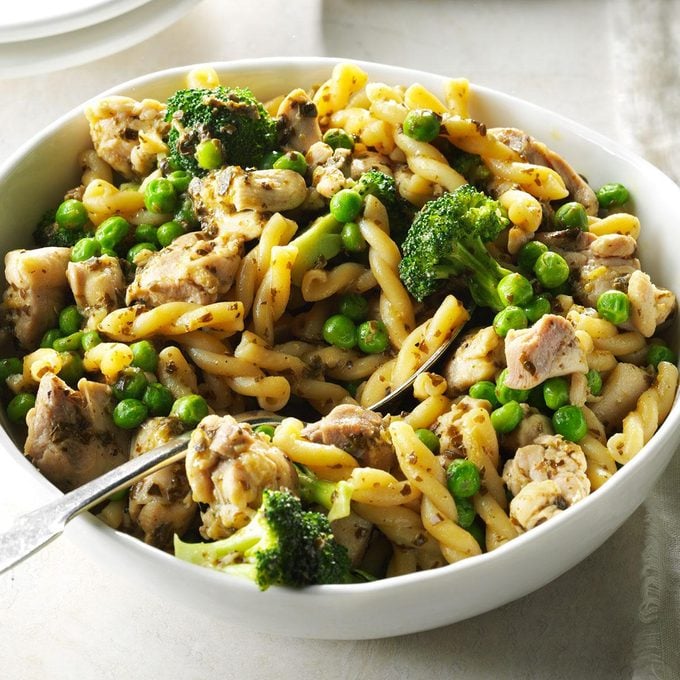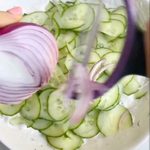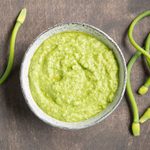How to Make Pesto at Home
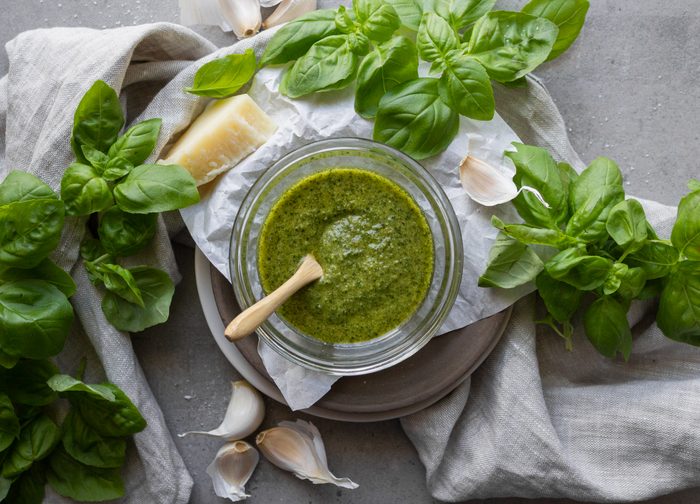
The best way to celebrate fresh basil is to turn this herb into pesto. We'll show you how to make pesto—and share our tips for choosing the best possible ingredients.
Our editors and experts handpick every product we feature. We may earn a commission from your purchases.
There’s nothing quite like the aroma of a fresh batch of pesto sauce—except that exquisite first taste! Learn how to make pesto, a sauce that’s so flavorful and versatile. It’s easy to make the classic pesto recipe, and there are countless variations, too.
What Is Pesto?
Pesto is a rustic sauce made by grinding fresh basil leaves with other ingredients, then slowly adding olive oil to create a composed sauce. Pesto originated in the Liguria region of Italy, where basil grows abundantly. The capital of Liguria is Genoa, and authentic pesto is sometimes referred to as pesto Genovese. The traditional ingredients are fresh basil, pine nuts, garlic, salt, Parmigiano-Reggiano or Pecorino Romano cheese and olive oil. The name “pesto” is derived from pestle, used with a mortar to hand-grind ingredients for the sauce.
Basic Pesto Ingredients
Basil
Pesto is all about bold flavor, so use the brightest, most aromatic fresh basil you can find. This should be a cinch in the summer, when basil is in season. Look for bundles at your store or farmers market. (If a neighbor’s garden is overrun with basil, ask for a bunch!) The leaves should be bright green and plump, with no brown spots. If packaged basil leaves are your only option, choose one with no brown spots or withering.
Cheese
Aged Italian cheeses like Parmigiano-Reggiano or fiore sardo are the best choices for pesto. Other choices include Pecorino and Asiago cheeses, though these have a stronger flavor that will come through in your pesto. Wedges of plain Parmesan will also work fine. What’s most important is that you don’t use Parmesan “shake” cheese from a can! This brilliant sauce won’t be the same if made with imitation, shelf-stable cheese.
Garlic
Make sure the garlic you use is fresh—no garlic powder or jarred garlic here. Shop for garlic bulbs that feel heavy for their size, with dry outer layers, no soft spots on the cloves or signs of sprouting. Learn how to make garlic scape pesto.
Olive Oil
Extra virgin olive oil is the most common choice for pesto. Because the flavors are so important in pesto, make sure your oil hasn’t turned rancid, which happens easily with bottles that have been in your pantry awhile or stored improperly. If it’s time to replace your oil, buy the best quality olive oil you can afford.
Pine Nuts
Also known as pignoli, pine nuts are small seeds from pine trees and a common ingredient in both savory and sweet Italian foods. The small, ivory-colored nuts have a soft texture and a buttery flavor that’s enhanced by toasting. Pine nuts tend to be expensive, because they’re more labor intensive to harvest than other nuts.
To toast pine nuts, place them in a single layer in a skillet over medium heat. Stir and toss the nuts for several minutes until they become fragrant. (Be careful not to burn them.) Let cool before using in your pesto.
You can also make a delicious, nut-free pesto.
How to Make Pesto Sauce
This simple recipe for Classic Pesto was shared by Iola Egle of Bella Vista, Arkansas. It comes together in about 10 minutes and makes a cup of pesto. It’s delicious with hot or cold pasta. Use pesto to bring flavor to other dishes, too, like soups, roast chicken, grilled cheese and homemade pizza.
Ingredients
- 4 cups loosely packed fresh basil leaves (just under 3 ounces)
- 1/2 cup grated Parmigiano-Reggiano cheese
- 2 cloves garlic, peeled and halved
- 1/4 teaspoon salt
- 1/2 cup pine nuts, toasted
- 1/2 cup good quality extra virgin olive oil
Tools You’ll Need
- Microplane grater: We like this hand-held Microplane grater that’s perfect for harder cheeses.
- Food processor: This Ninja food processor will make quick work of the basil and pine nuts.
- Spatula: Use a rubber spatula to scrape down the sides of the bowl as you process.
Directions
Step 1: Chop the basil
Basil leaves should be washed and dried before starting. Put the basil leaves in the bowl of a food processor or chopper and secure the cover. Pulse the leaves in short bursts until the leaves are finely chopped. The leaves can be chopped in batches if your food processor is on the small side.
Step 2: Blend in the next three ingredients
Place the grated cheese, garlic and salt in the food processor bowl. Pulse the ingredients until they’re incorporated with the basil, scraping the sides of the bowl as needed.
Step 3: Add the toasted pine nuts
Add the whole pine nuts to the food processor, and pulse to chop and blend them in with everything else.
Step 4: Slowly add the olive oil
Have the olive oil ready in a glass measuring cup or something else that’s easy to pour from. With the food processor running on low speed, slowly pour the olive oil through the feed tube or dispenser in the top of your food processor.
Keep adding the oil in a slow and steady stream to allow the ingredients to emulsify. Once all the oil is in, scrape down the sides of the bowl and blend it one more time.
Step 5: Adjust for taste
Taste the pesto, and add a pinch more salt if needed. Then your pesto is ready to serve or store! Here are the best ways to enjoy your fresh pesto.
Pesto Sauce Variations
There are many clever variations on traditional basil pesto. These sauces are perfect for using up a big batch of greens or other herbs, to use different kinds of nuts or to blend other ingredients into flavor-packed sauces.
Pesto with Other Herbs
These herb-y pesto variations are as delicious as the basil version. Parsley can be used in place of some or all of the basil, or make a pesto with fragrant cilantro. You can even use extra herbs from your garden to make a pesto blend.
Pesto with Greens
Greens like spinach, kale and arugula make amazing pesto, and give you another way of preserving seasonal produce from the farmers market or CSA. Replace all of the basil in the recipe with greens, or blend them with basil or other fresh herbs.
Pesto with Other Nuts
Since pine nuts are sometimes pricey or hard to find, try other nuts in pesto, like walnuts or pecans. Toast the nuts briefly in a skillet (like with pine nuts) to enhance the flavors. Chop harder nuts, like almonds and pecans, on a cutting board before adding them to the food processor.
More Pesto Variations
Get creative with your garden overflow and pantry items to create really unique and tasty pesto. Think spicy poblano pepper pesto or a tapenade-like olive pesto!
How to Store Pesto
Pesto can be refrigerated for up to five days. Pour your pesto into a small glass or plastic storage container. Add a thin layer of olive oil to the top, which will help prevent air from oxidizing the basil and turning the pesto brown. Cover the dish tightly.
There are two options to freeze your pesto. You can pour your whole batch into a freezer-proof dish, leaving about an inch of space at the top for expansion. Pour a thin layer of olive oil over the top of the pesto, then seal the dish tightly. Place it upright in the freezer to keep the oil in place until it freezes.
You can also freeze pesto in ice cube trays, to easily grab a cube or two to toss into your recipes. Spoon the pesto into an ice cube tray, then cover it tightly. Freeze until the pesto is firm. Pop out the pesto cubes (you can run a little hot water over the back of the tray to loosen them) and store the cubes in a tightly-sealed freezer bag for up to one year.
How to Use Pesto
There are so many possibilities, it would be quicker to tell you how not to use pesto!
Pesto is a delectable sauce to toss with any kind of pasta, thick enough to cling to every noodle, elbow and twist. Try Pesto Pasta and Potato Salad and Creamy Pesto Penne. Pesto also makes a delicious summertime Garden Pesto Pasta Salad.
Try pesto in place of tomato sauce on pizzas and flatbreads. You can spoon pesto over burgers and meat, or fold it in like with these Chicken Pesto Meatballs. Add pesto to all kinds of soups for a burst of basil flavor. And pesto is a flavorful base for salad dressing, like this Pesto Buttermilk Dressing.
Breakfast is fair game for pesto, too. It’s incredible in this Creamy Pesto n’ Bacon Eggs Benedict and in a Prosciutto Pesto Breakfast Strata.
Pesto Recipe Tips
Use the pulse function
Food processors are perfect for blending pesto quickly, but some folks make the mistake of overprocessing the ingredients. It’s best to use the pulse function to chop your basil and incorporate other ingredients like nuts, cheese and garlic. These short bursts of power process the ingredients without turning them to liquid. Once you begin adding the oil, you can let the food processor run on low speed to emulsify the sauce.
Create a more rustic texture
To have larger pieces of basil in your pesto and a more traditional texture, process the basil leaves in a few batches. Pulse the food processor just a few times until the leaves are coarsely chopped, remove them and repeat with the next batch.
Another way to get an authentic, rustic pesto (and a good workout) is to make the pesto entirely with a mortar and pestle. First, the pine nuts are ground down, then the basil leaves with salt. The cheese is pounded in next, followed by long pours of olive oil. This traditional method creates a thick and more textured pesto sauce.
You can blanch the basil—or not
There are dueling opinions among cooks about whether or not to blanch basil leaves before turning them into pesto. When cut, basil leaves will start to oxidize and turn brown. However, if the leaves are blanched first (very briefly dunked in boiling water, then ice water), they will keep their bright green color. The downside is the added work and time to blanch the leaves. Also, some say that blanching diminishes the vibrant flavor of the basil.
If the pesto you’re making will be eaten quickly, you’re fine to skip blanching. For pesto that you’re planning to store or freeze for a while (or if you don’t mind a slightly toned-down flavor), you can blanch and dry your basil leaves before processing them.
Make your pesto vegan
There are ways to turn traditional pesto into vegan pesto and still be delicious. The easiest way is to just omit the cheese altogether. This pesto will still have all the flavor and intensity of the basil and garlic, and texture from the pine nuts. If you don’t want to sacrifice that umami flavor that cheese brings, try adding nutritional yeast. Different from yeast for baking, nutritional yeast is a vitamin-packed food that has a slightly nutty, slightly cheesy flavor. It’s a great way to add cheese flavor to dairy-free and vegan dishes. Begin by adding 1/4 cup of nutritional yeast to your pesto ingredients, then taste and add more if you wish.
Amp up the flavor of your pesto
It’s easy to add more intensity and even spice to your pesto if you want. If you love garlic, add one, two or even more cloves of garlic to your pesto. Add a pinch or two of black pepper or red pepper flakes. Add a splash of lemon juice or vinegar for a bit of acid to balance the rich sauce and enhance the other flavors.
Getting ready for a quick pasta dinner? Make sure you’ve got the best store-bought pesto on hand.

